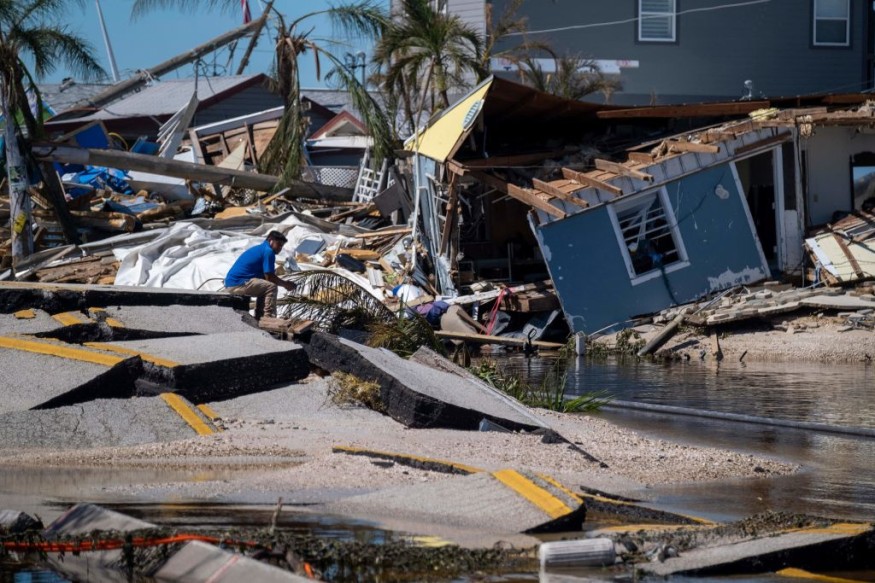
The year 2022 is a spectrum of natural disasters for the whole world.
The year started with the Hunga Tonga eruption and the last few days are filled with news on the bomb cyclone in the US.
With data gathered for the past 12 months, here are 10 of the deadliest natural disasters around the world in 2022:
1. February: Floods and Mudslides in Brazil
- 233 deaths; 500,000 forced to flee; US$ 131.2M damages
The Brazilian town of Petropolis experienced severe flooding just two months into the year.
At least 233 people were killed when floodwaters and mudslides swept through the mountainous town of Petröpolis.
Around 500,000 people were forced to flee as the disastrous mudslides wreaked havoc, destroying everything in its path, including homes, cars, and people.
Reports showed damages amounted to approximately US$131.2M.
2. April: Flooding in South Africa
- 461 deaths; 87 missing; US$1M damages
Early in April, South Africa's Eastern Cape experienced heavy rains that led to flooding and landslides, killing an estimated 461 people.
Parts of Durban, the country's third-largest city, were also affected. Over 87 people are still unaccounted for months after the disaster, and thousands still lack permanent housing.
The disaster caused approximately US$1M in damages.
3. June: Magnitude 6,1 Earthquake in Afghanistan
- 1,036 deaths; 2989 injured; US$110.3M for medical response
According to the UN, a magnitude-6.1 earthquake that struck eastern Afghanistan in June resulted in landslides, the destruction of thousands of homes, and the deaths of an estimated 1,036 people.
The earthquake, which is the deadliest in Afghanistan in decades, is just one of many problems that have plagued the nation ever since the Taliban took control of Kabul last year, including social unrest and hunger.
4. August: Floods in Afghanistan
- 182 deaths; 23M people with acute hunger; US$2B damages
Throughout the entire month of August, Afghanistan experienced unseasonably heavy rainfall, with disastrous results: at least 182 Afghans perished in the floods and landslides.
The country's leadership begged the international community for additional aid as it struggled to recover from an earthquake that occurred less than two months earlier, according to Reuters.
5. June to August: Heat Waves in Europe
- 20,000 deaths; US$20B damages
Europe experienced the hottest months on record due to recurrent heatwaves. The worst drought of all time on the continent was also brought on by extreme temperatures.
According to The Guardian, This summer's heatwaves in western Europe claimed the lives of more than 20,000 people, with temperatures that would be virtually unimaginable without a climate breakdown.
6. June to October: Floods in Pakistan
- 1,739 Deaths; 33M homes damaged; US$30B damages
According to official estimates, record-breaking flooding in Pakistan between June and October swept away thousands of homes and claimed the lives of at least 1,739 people.
According to local officials, it could take as much as six months for the floodwaters to completely recede.
The flood dealt damage to approximately 33 million homes.
7. June to November: Floods in Nigeria
- 612 deaths; 1.4M people displaced; US$15M damages to farmlands
According to Nigerian officials, the country's rainy season, which lasts from June to November, was one of the deadliest in more than a decade, with floods responsible for at least 612 fatalities nationwide and the displacement of an additional 1.4 million people.
In a report published by the World Weather Attribution, climate change was credited with making flooding in Nigeria and other parts of West Africa "80 times more likely," US News reports.
8. September: Hurricane Ian in the US
- 148 deaths; US$67B damages
The hurricane killed many people in the US and is regarded as the deadliest hurricane to hit Florida since 1935.
It had a significant negative impact on millions of people and amassed damages totaling US$67B. Reports show there are at least 126 deaths during the hurricane.
9. December: Bomb Cyclone in the US
- 60 deaths; 1M homes without electricity
As of December 27, North America is experiencing a severe snowstorm that is also known as the "blizzard of the century." Although it is still ongoing, it has already resulted in about 60 fatalities and left over a million homes without electricity.
The cost of damages from the bomb cyclone is yet to be seen.
10. Whole Year: Drought in East Africa
- 13M people risks severe hunger; US$372M needed for Feb-Jul
In the Horn of Africa, several years in the running of below-average rainfall led to one of the most severe climate-related emergencies in the previous 40 years, MoneyControl.com reported.
Due to high rates of malnutrition, nearly 13 million people in Kenya, Somalia, and Ethiopia face a serious risk of starvation in the first quarter of this year.
To meet immediate needs and assist pastoral communities in becoming more resilient to recurring climate shocks, the World Food Programme (WFP) estimated that $327 million should have been funded from February through July of this year.
© 2025 NatureWorldNews.com All rights reserved. Do not reproduce without permission.





